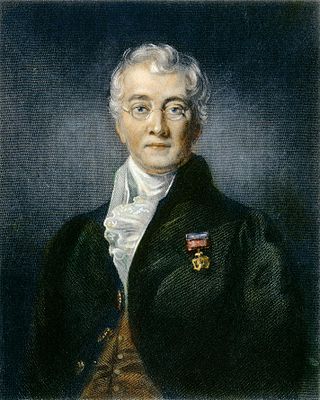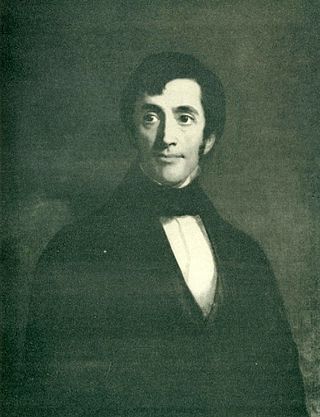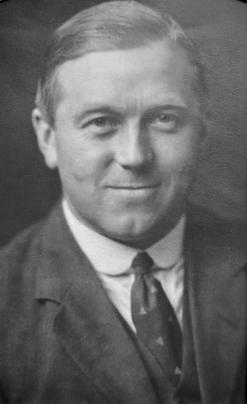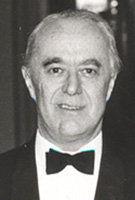
Joseph Lister, 1st Baron Lister, was a British surgeon, medical scientist, experimental pathologist and a pioneer of antiseptic surgery and preventative medicine. Joseph Lister revolutionised the craft of surgery in the same manner that John Hunter revolutionised the science of surgery.

Sir Charles Bell was a Scottish surgeon, anatomist, physiologist, neurologist, artist, and philosophical theologian. He is noted for discovering the difference between sensory nerves and motor nerves in the spinal cord. He is also noted for describing Bell's palsy.

Sir James Paget, 1st Baronet FRS HFRSE was an English surgeon and pathologist who is best remembered for naming Paget's disease and who is considered, together with Rudolf Virchow, as one of the founders of scientific medical pathology. His famous works included Lectures on Tumours (1851) and Lectures on Surgical Pathology (1853). There are several medical conditions which were described by, and later named after, Paget:
George Robert Gleig was a Scottish soldier, military writer, and priest.

John Hughes Bennett PRCPE FRSE was an English physician, physiologist and pathologist. His main contribution to medicine has been the first description of leukemia as a blood disorder (1845). The first person to describe leukemia as an unknown disease was Alfred François Donné.
James Esdaile, M.D., E.I.C.S., Bengal (1808–1859), an Edinburgh trained Scottish surgeon, who served for twenty years with the East India Company, is a notable figure in the history of “animal magnetism" and, in particular, in the history of general anaesthesia.

John Davy FRS FRSE was a Cornish doctor, amateur chemist, brother of the noted chemist Sir Humphry Davy, and cousin of Edmund Davy.

John Elliotson, M.D., M.D.(Oxford, 1821), F.R.C.P.(London, 1822), F.R.S. (1829), professor of the principles and practice of medicine at University College London (1832), senior physician to University College Hospital (1834) — and, in concert with William Collins Engledue M.D., the co-editor of The Zoist.

Robert Liston was a Scottish surgeon. Liston was noted for his speed and skill in an era prior to anaesthetics, when speed made a difference in terms of pain and survival. He was the first Professor of Clinical Surgery at University College Hospital in London and performed the first public operation utilizing modern anaesthesia in Europe.

Sir John Fraser, 1st Baronet, was Regius Professor of Clinical Surgery at Edinburgh University from 1925 to 1944 and served as principal of the University of Edinburgh from 1944 to 1947.

The Indian blackbird is a member of the thrush family Turdidae. It was formerly considered a subspecies of the common blackbird. It is found only in India and Sri Lanka. The subspecies from most of the Indian subcontinent, simillimus, nigropileus, bourdilloni and spencei, are small, only 19–20 centimetres long, and have broad eye-rings. They also differ in proportions, wing formula, egg colour and voice from the common blackbird.

Dr William Charles Osman Hill FRSE FZS FLS FRAI was a British anatomist, primatologist, and a leading authority on primate anatomy during the 20th century. He is best known for his nearly completed eight-volume series, Primates: Comparative Anatomy and Taxonomy, which covered all living and extinct primates known at the time in full detail and contained illustrations created by his wife, Yvonne. Schooled at King Edward VI Camp Hill School for Boys in Birmingham and University of Birmingham, he went on to publish 248 works and accumulated a vast collection of primate specimens that are now stored at the Royal College of Surgeons of England.
Henry Lonsdale M.D. (1816–1876) was an English physician, now known as a biographer.
Peter Daniel Anthonisz was a burgher doctor who was the first Ceylonese to obtain an M.R.C.P. and F.R.C.S. He was also the inaugural president of the Ceylon Branch of the British Medical Association and a member of the Legislative Council for nine years.

Dr Henry Marshall FRSE (1775–1851) was a Scottish military surgeon, hygienist and medical author. He served as Inspector General of all British military hospitals in the early 19th century. He is known as the “founder of military medical statistics”. He also campaigned strongly for the abolition of flogging as an army punishment.

Sir John Bruce, was a Scottish surgeon who was Regius Professor of Clinical Surgery in the University of Edinburgh and President of the Royal College of Surgeons of Edinburgh.

Ian Aird was a Scottish surgeon who became Professor of Surgery at the Royal Postgraduate Medical School in London. There he built up a large and productive research department which made particular contributions in cardiac surgery, renal transplantation and the association of blood groups with stomach cancer. He came to national and international prominence in 1953 when he led the teams which performed an operation to separate conjoined twins. His book A Companion in Surgical Studies was among the best selling surgical textbooks of its day. He died suddenly in 1962 at the age of 57.
Robert James Nicholl Streeten was a British physician and medical editor and secretary of the Provincial Medical and Surgical Association.

James Johnston Mason Brown OBE, FRCSEd was a Scottish paediatric surgeon. During World War II he served as a surgical specialist with the 8th Army in North Africa and Italy and was awarded the OBE for this service. As surgeon-in-chief at the Royal Hospital for Sick Children in Edinburgh, he edited the major textbook The Surgery of Childhood. He was the joint founder of the Scottish Surgical Paediatric Society and a founder member of the British Association of Paediatric Surgeons (BAPS), of which he became president. He was elected President of the Royal College of Surgeons of Edinburgh (RCSEd) in 1962 but died in office aged 56 years.
John MacDonnell was an Irish surgeon and pioneer of surgical anaesthesia in Ireland.














